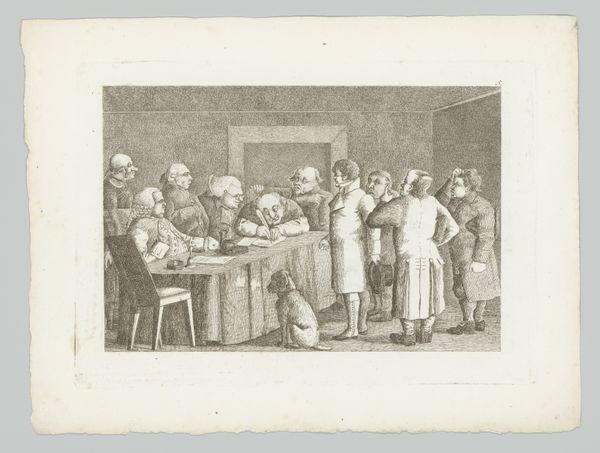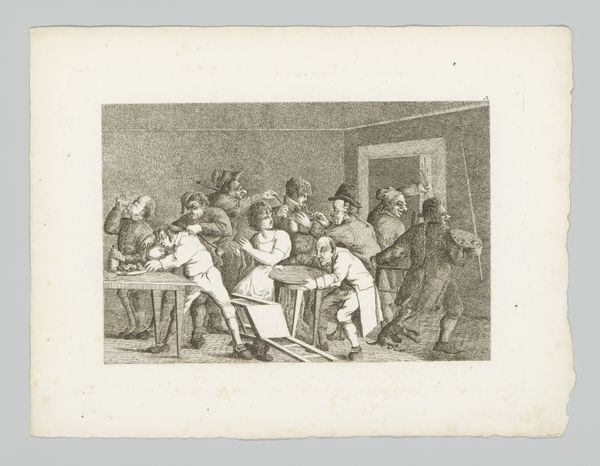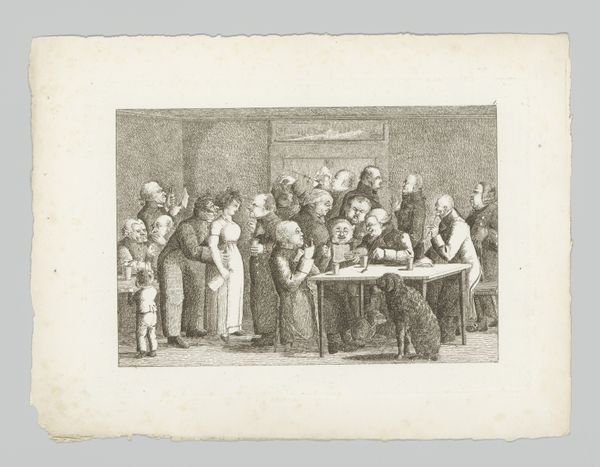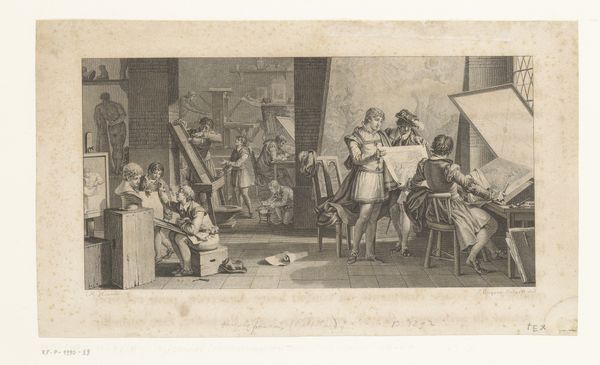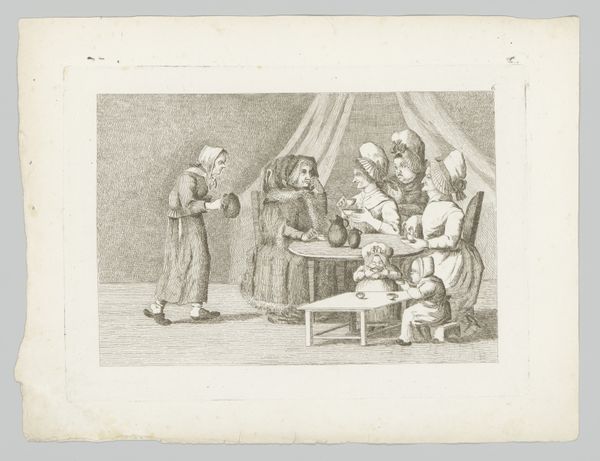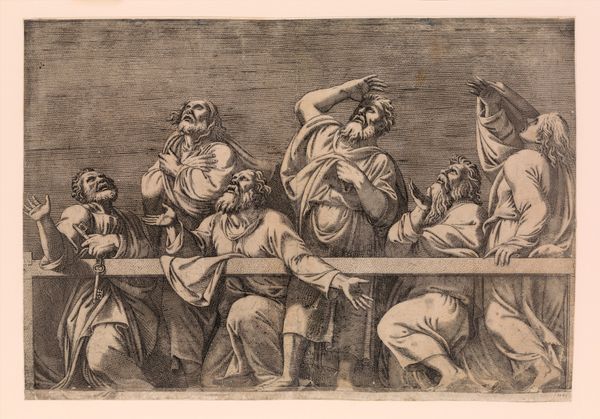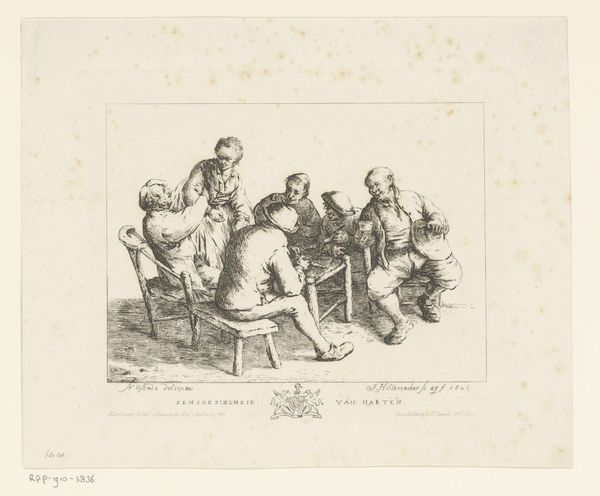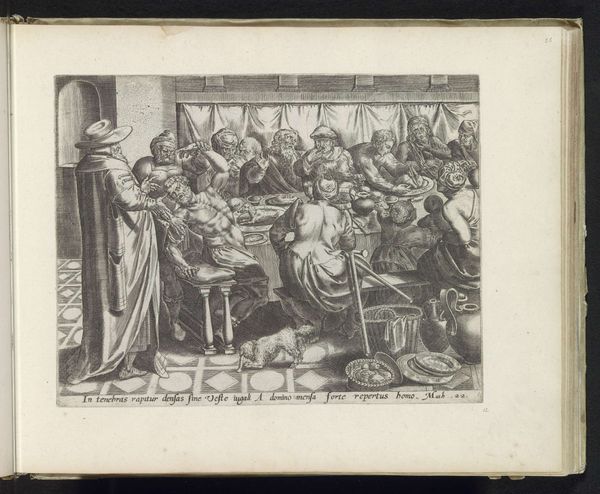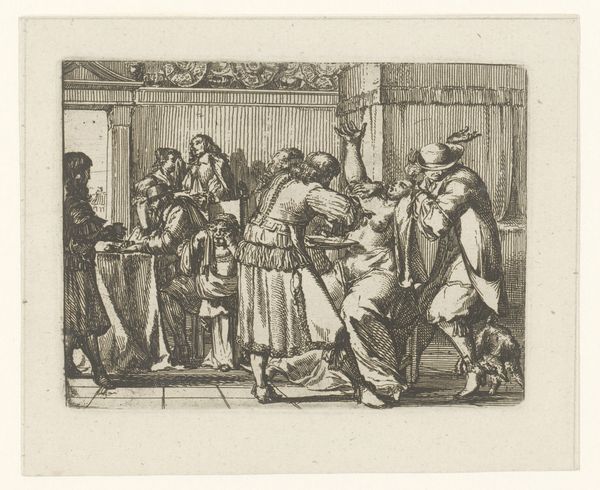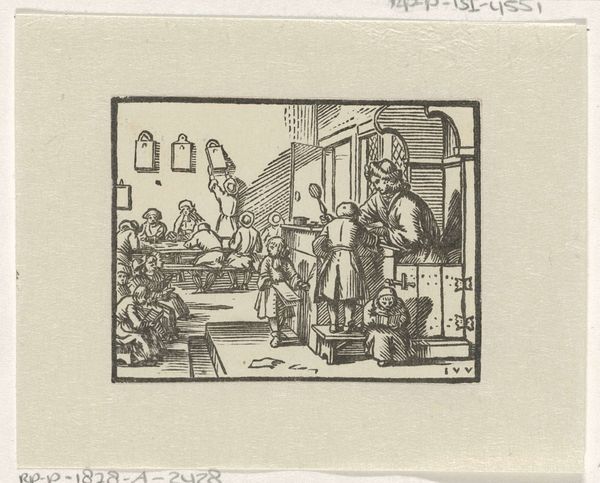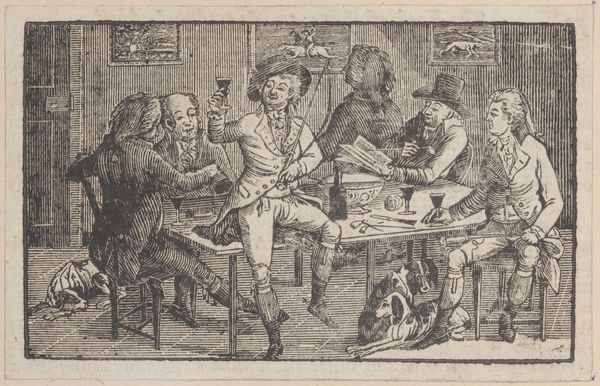
print, etching, engraving
#
narrative-art
#
ink paper printed
# print
#
etching
#
old engraving style
#
romanticism
#
genre-painting
#
academic-art
#
engraving
Dimensions: height 175 mm, width 252 mm
Copyright: Rijks Museum: Open Domain
Curator: This etching, likely made between 1788 and 1806, is titled "Waardin is kwaad om de puinhoop van haar gasten"—"The Landlady is angry about the mess of her guests." It's by Friedrich Rottmann. Editor: Chaos! That's the overwhelming first impression. The tipped table, scattered objects... it all radiates disarray. It feels like a moment frozen in time, right before the eruption. Curator: The interesting thing to me is the medium itself, this print, probably made using a copper plate. Look at the way the ink sits on the paper. It's an intimate medium, meant for circulation, for the rapid dispersal of images. It makes you consider, who was the intended audience and where might they have viewed this image of bourgeois life gone awry? Editor: Ah, good point. And the central figure—that enraged landlady! Her stance, those arms spread wide. To me, it recalls images of divine wrath, think of depictions of angry deities from that era. Rottmann's connecting everyday frustrations with something larger. Curator: Indeed, though I'd wager the material reality is more pressing here. The cost of broken furniture, spilled drinks—who will foot the bill? These seemingly insignificant disruptions highlight deeper tensions around ownership and responsibility. Was Rottmann commenting on social mobility, showing what could happen when those unaccustomed to privilege are let loose? Editor: Maybe, or perhaps this chaos itself carries a moral message, echoing "vanitas" themes with its subtle memento mori that wealth is fleeting, and that everything collapses, or shatters? Those upturned table with dishes are common symbols, no? Curator: It does remind us that even the most carefully constructed systems are liable to break. Thinking about the artist's studio then, Rottmann as maker is complicit to a consumer society hungry for these sorts of depictions. What did prints mean as objects of economic trade themselves? It feels so much is contained within these material traces. Editor: Absolutely! And while Friedrich Rottmann created the plate and pulled the print, there were draftsmen, laborers involved in this artwork, creating both a physical object and an image. I'm fascinated how symbols resonate and refract, connecting viewers across different eras. Curator: Considering the context of production shifts our perspectives, doesn't it? It's more than just artistic representation; it’s about the complex dance of labor and resources. Editor: Exactly! That's been my enduring thought throughout the experience of focusing on the visual cues within this small printed snapshot from the late 1700s or early 1800s. Thank you for offering a material grounding for this conversation.
Comments
No comments
Be the first to comment and join the conversation on the ultimate creative platform.
